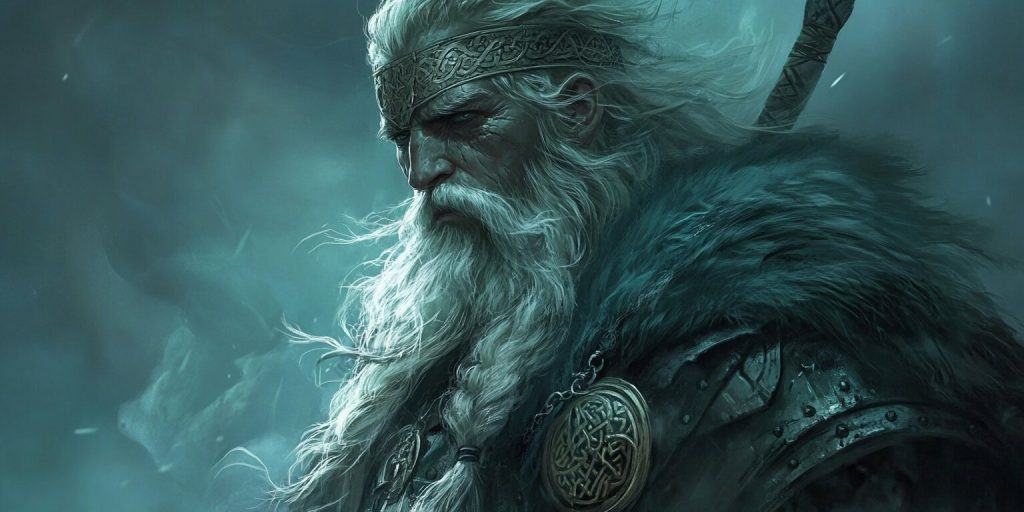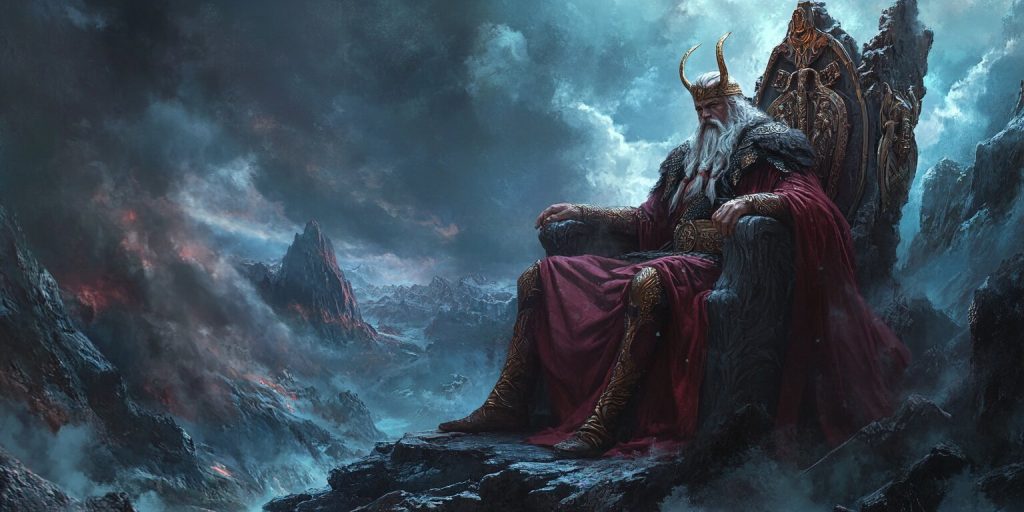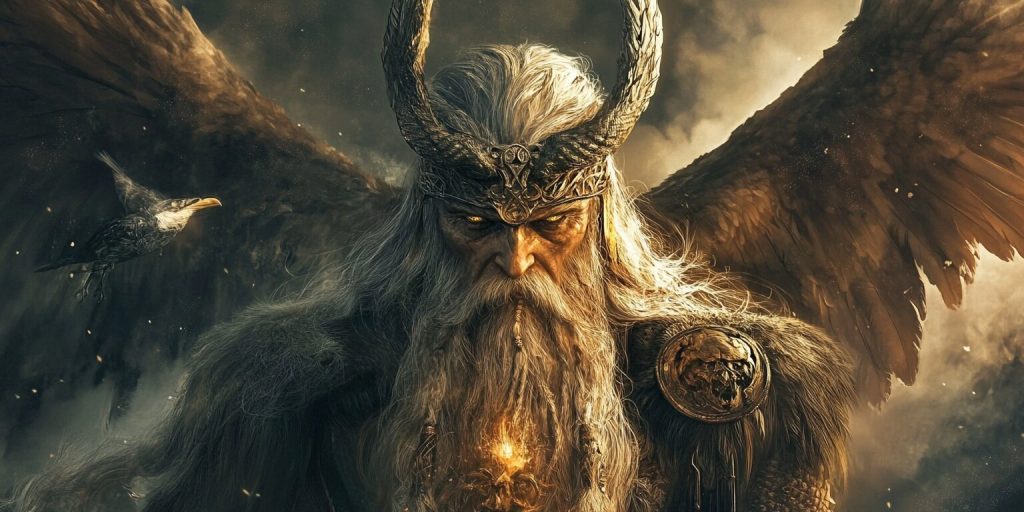Aesir Gods, Norse Gods, Norse Mythology, Odin
What is the Story of Wotan in Norse Mythology?
Wotan is one of the most revered and complex deities in the whole pantheon of Germanic and Scandinavian gods—Odin in Norse mythology. Named Woden, Wodan, and Wotan, he assumed a central position in the ancient beliefs of the Norse and Germanic peoples. Through Wotan’s influence, as a god of wisdom, war, and death and the ruler of all other gods, a thread was flung into every sphere of human and divine life, echoing the teachings of the old Norse poems. With all the myth and symbolism in his story, it is little wonder that it should have captivated the imagination of Vikings, warriors, and poets alike, as well as the gods and goddesses of the Norse realm.
Wotan: Several Names for the Revered God
Wotan is one of the thousands of names attributed to the god more commonly known as Odin in Norse mythology. Cultural differences and languages spoken by the various Germanic people gave rise to different names; for example, in Old Norse, he is called Odin, and in Old High German, he is called Wotan. From Proto-Germanic Wōđanaz, meaning “raging” or “frenzied,” the name attests to this god’s complicated, sometimes contradictory character.
Odin is traditionally portrayed as the “All-Father,” an enigmatic one-eyed figure who oversees the rest of the gods from Asgard, the home of Aesir gods. Odin sits on his high throne, Hlidskjalf, and watches everything that transpires in the world, much like the eight-legged horse, Sleipnir, who traverses the realms. This gives him the name of the god of wisdom and knowledge since he is a deity always seeking a better understanding, more often than not, at big personal expenses.
Origins of Wotan God, from Myth and Religion
Wotan god, as a figure of Norse mythology, is interwoven with profound links to the world’s creation and cosmic order, deeply influencing the beliefs of the Vikings. It is said that Odin was born to Bestla, a giantess, and Borr, a descendant of the primordial being Ymir. He slew Ymir with his brothers Vili and Vé and used his body to create the world. This act of creation underscores Odin’s position as a god of life and death.
Likewise, in Norse mythology, Odin is also associated with the cosmic tree Yggdrasil, which includes all nine worlds. This tree is an axis mundi, or navel, of the universe, and Odin, in his nature as god, is intimately related to its symbolism.
That of Odin, self-impaled upon his own spear, Gungnir, seeking knowledge by hanging on Yggdrasil for nine days and nights, must be one of the most vivid images in Norse mythology, often accompanied by his raven, Huginn. Through this ordeal, Odin attains knowledge of the Runes, ancient symbols of power and magic, and is further established as a god of wisdom and mysticism.
Wotan, as the Leader of the Wild Hunt and a God of War Himself

The most striking feature of Odin’s role in the mythology is that of the god of war, a title he shares with Woden among the Germanic gods. He typically acts as the leader of a fearsome event, the Wild Hunt—a spectral procession of the dead—passing across the night sky, often accompanied by his raven, a symbol of his omnipresence. There are said to be omens of great cataclysm or disaster with this specific aspect in which Wotan embodies war’s chaotic and destructive forces.
As a war god, Odin is also closely associated with the concept of Valhalla, the hall of the slain, to which the warriors who die bravely in battle are conveyed by the Valkyries—that is, Odin’s warrior maidens. In Valhalla, there is a host of such warriors called the Einherjar, who prepare themselves for Ragnarok, the end of the world, where they will fight beside Odin in the final battle. This characteristic of Odin strikes a chord with the Viking ideal of valor in battle and the belief in an afterlife where this valor is rewarded.
The Wisdom and Mysticism of Wotan Norse Mythology
Perhaps Odin’s most defining feature is that he is the seeker of wisdom—the god of wisdom, poetry, and knowledge. Odin is defined by an insatiable thirst to acquire wisdom, even if he has to make grandiose sacrifices for that purpose. The most well-known of these stories concerns how Odin sacrificed an eye to receive a drink from Mimir’s well and thus obtain immense knowledge, a central theme in the sagas of the Vikings.
Indeed, his connection to the Runes—both an alphabet and a magical, symbolic system—stamps Odin as a Wisdom God. Indeed one of the most potent images regarding how far he would go for knowledge is that of Odin hanging from the tree Yggdrasil, piercing himself with his own spear as he sought the Runes, a tale often recounted in old Norse poems. This act of self-sacrifice highlights Odin’s wisdom and his role as a god who straddles the realms of the living and the dead, embodying the complexities of worship in Norse culture.
Wotan, Mercury, and the Germanic Connection
Another intriguing aspect of his personality is his relationship with the Roman god Mercury. Tacitus already identified Wotan with the function of Mercury because both were gods of travel, commerce, and communication, showcasing the interconnectedness of Indo-European mythology and the tales of the Vikings. This might have influenced not only his depiction but also the way Germanic peoples made offerings to him by treating him as the god that the people liked most to describe as their messenger and escort of souls.
Besides the god of war and wisdom, Odin, also known as Wotan, belongs to magic, poetry, and prophecy, embodying the essence of the Germanic gods. Another important symbol connected with Odin is the mead of poetry – a magical drink that can bestow the gift of eloquence and inspiration. According to the myth, he stole the mead from Gunnlod, the giantess. This is a further illustration of his shrewdness.
The Many Faces of Wotan: Thor, Loki, and the Aesir Gods
Wotan’s relation to other Norse pantheon gods further sweetens his tale. He is the father of many significant gods, among them Thor, the god of thunder, and Baldr, the god of beauty and purity, who are both worshipped in various realms of the Norse pantheon. Thor is one of the best-known Norse gods, usually presented as a fighting giant with a hammer known as Mjölnir. The dynamic between Odin and Thor is interesting, especially considering their differing approaches to strength and wisdom, which are central themes in worshiping Norse deities. It reflects the balance that should be set between wisdom and strength, strategy and brute force, much like the duality seen in the worship of gods like Odin and Thor.

Another prominent figure in the mythology of Scandinavia is Loki, often seen as a trickster god whose actions create tension within the realm of the gods and goddesses. Even if he is not his son, Odin is often referred to as Loki’s brother by blood, and their relationship is such that it is challenged and full of tension, reflecting the chaotic nature of their respective roles among the gods. His evil and lies bring most havoc to the gods, but at the same time, he serves a very important role in the development of mythological facts, and this can be seen clearly with a reference to Ragnarok.
The Wotan Legacy in Norse and Germanic Mythology
Wotan’s influence has reached beyond the mythology carried through the ages by ancient Norse and Germanic human tribes. Wotan’s representation as a one-eyed, wise, and cloaked-in-mystery god has succeeded in creeping through history to insinuate itself into current times in literature and the arts, echoing the worship of ancient Indo-European deities. That is, even popular culture cannot escape the allure of this god-representative. A good example is Odin in Marvel Comics, where he is depicted as a powerful god who commands respect and worship from mortals and deities. To a significant extent, the old myths form one of the larger bases that collect to contribute, so the outcome is the bringing of the ancient god into contemporary times, reflecting the enduring legacy of the Germanic gods.
Names of places across Scandinavia and the Germanic countries of Europe attest to the persistence of Wotan god worship. Many towns and features are named after him—testimony to a deep reverence for this powerful deity in the olden days.
Wotan was venerated in the ancient Germanic and Norse worlds as a god who represented both the light and the dark side of life. He was looked up to as a god of wisdom and war, an adventurer of knowledge, and a giver of life and death. After him, he left a very rich, symbolic, and complex story, much like the inscriptions found in ancient runestones, that keeps attracting the readership for myths and legends from time past.
Conclusion: The Lasting Power of Wotan
One of the most multifaceted and complicated gods in Norse mythology is Wotan or Odin. Through his roles as a god of war and wisdom, he unfolds in his pursuit of knowledge and attempts to master the runes. The story of Wotan is one of sacrifice, power, and mysteriousness. It holds in itself duality: he represents respect yet fear, the ruler of gods from the duality of life and death, chaos, and order.
In the myths, Wotan is not so much a god as he is a representation of human striving, our wanting of knowledge, fear of the unknown, and our wrestle for power and control, much like the challenges faced by the sons of Odin. His legend would go on to inspire, holding us in wonder, in that timeless quality of myth, how deep and inexorably strong the wellspring of stories we tell can prove to be, much like the ancient tales of Odin and his eight-legged horse, Sleipnir.

